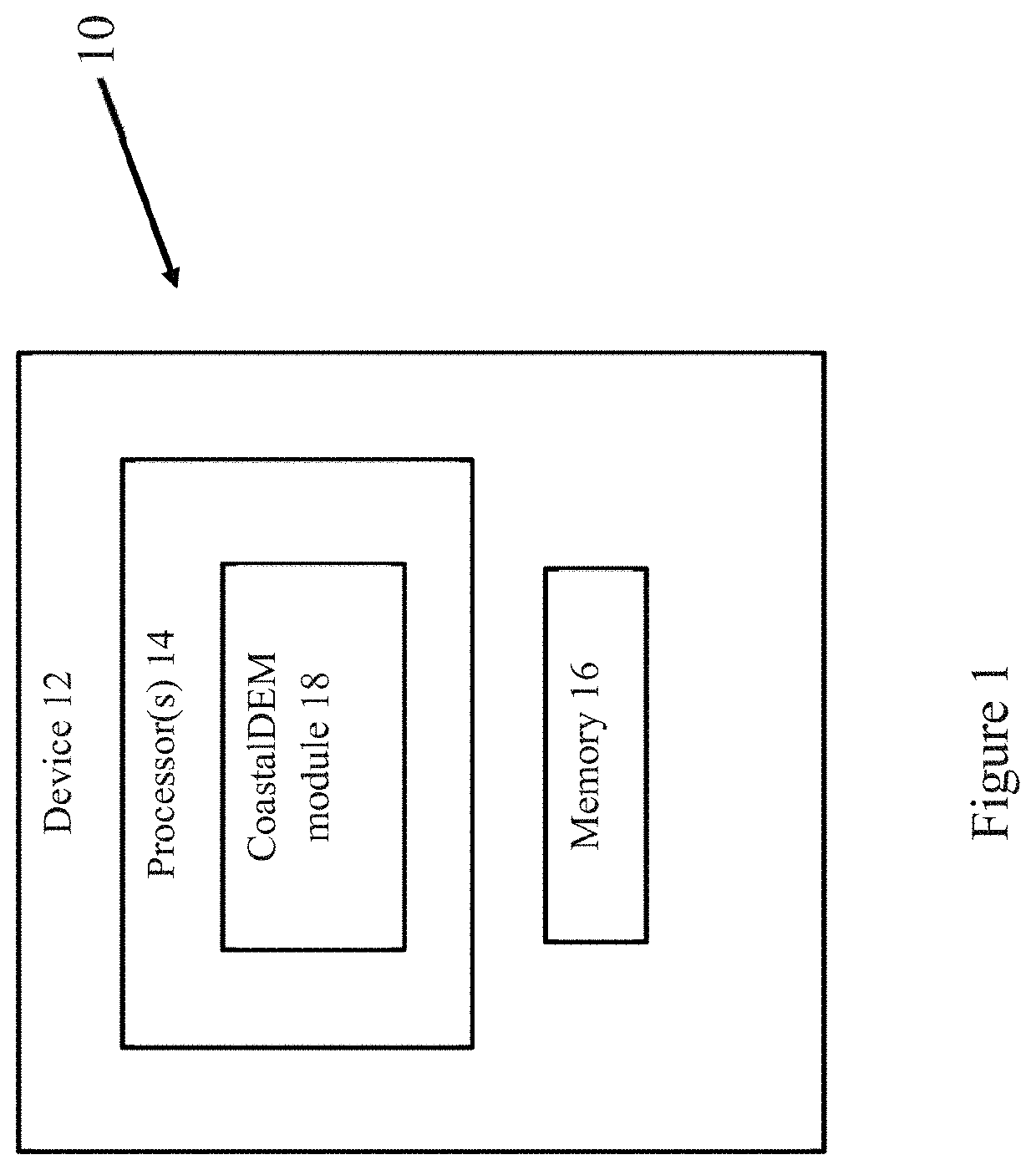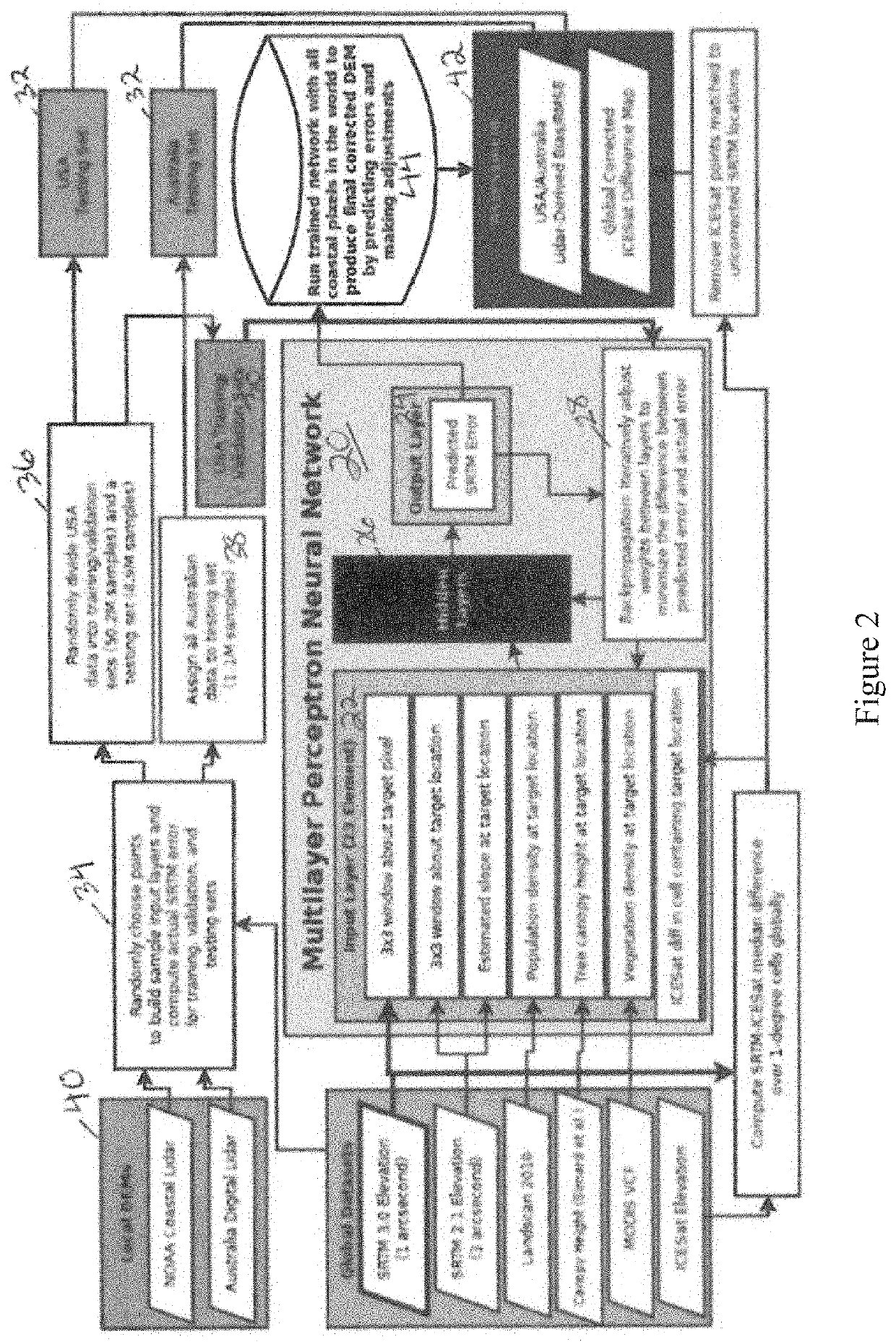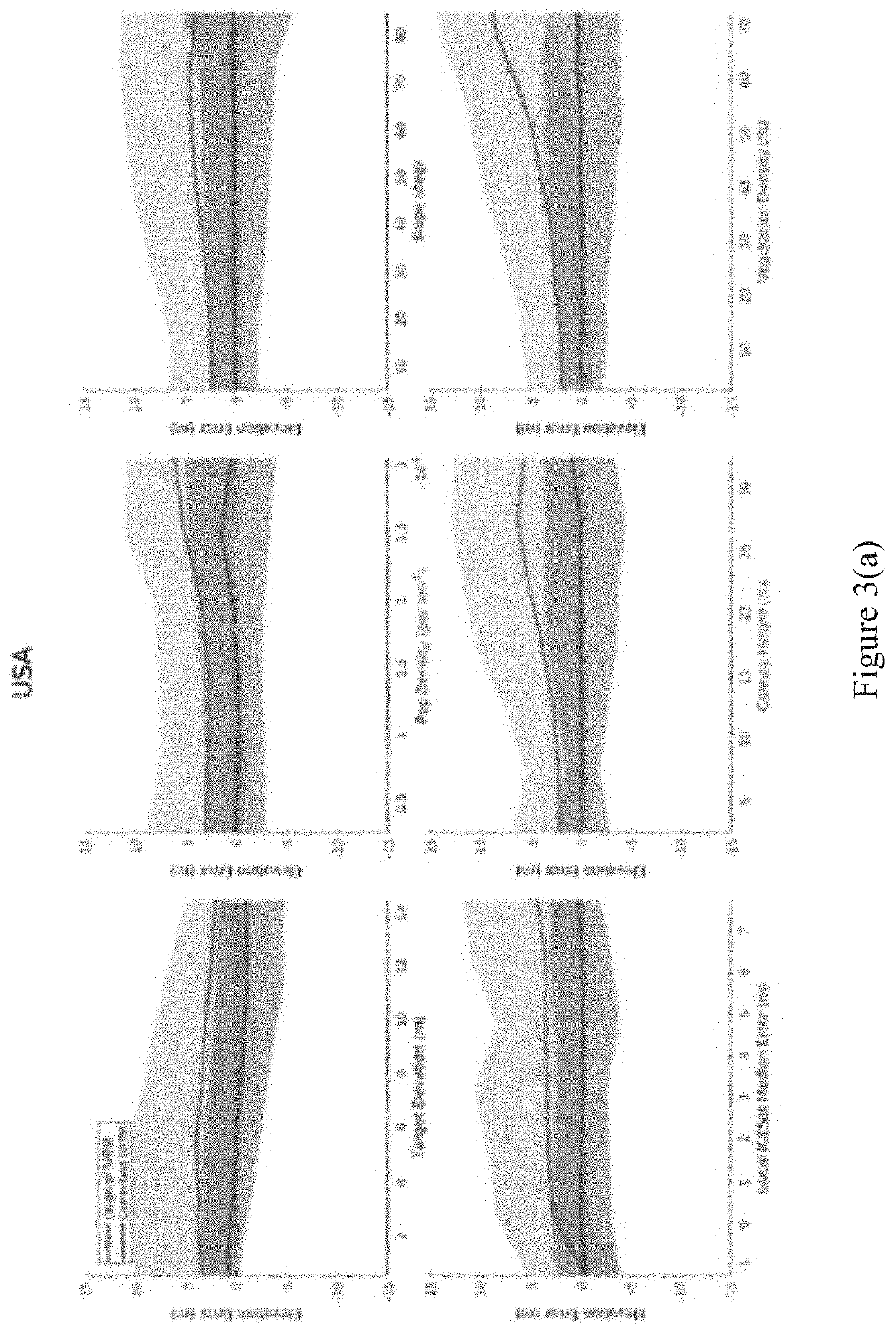System and method for a global digital elevation model
a global digital elevation model and elevation model technology, applied in the field of digital elevation models, can solve the problems of large errors in the srtm, data to systematically underpredict the exposure of the population to coastal flooding by as much as 60%, and less informed mitigation and adaptation policy decisions
- Summary
- Abstract
- Description
- Claims
- Application Information
AI Technical Summary
Benefits of technology
Problems solved by technology
Method used
Image
Examples
Embodiment Construction
[0020]Positive vertical bias in elevation data derived from NASA's Shuttle Radar Topography Mission (SRTM) is known to cause substantial underestimation of coastal flood risks and exposure. Previous attempts to correct SRTM elevations have used regression to predict vertical error from a small number of auxiliary data products, but these efforts have been focused on reducing error introduced solely by vegetative land cover.
[0021]As such, generally disclosed herein is a multilayer perceptron artificial neural network to perform a 23-dimensional vertical error regression analyses, where in addition to vegetation cover indices, additional variables are used including neighborhood elevation values, population density, land slope, and local SRTM deviations from ICESat altitude observations. Using lidar data as ground truth, the neural network is trained on samples of US data from 1-20 m of elevation according to SRTM, and outputs are assessed with extensive testing sets in the US and Aus...
PUM
 Login to View More
Login to View More Abstract
Description
Claims
Application Information
 Login to View More
Login to View More - R&D
- Intellectual Property
- Life Sciences
- Materials
- Tech Scout
- Unparalleled Data Quality
- Higher Quality Content
- 60% Fewer Hallucinations
Browse by: Latest US Patents, China's latest patents, Technical Efficacy Thesaurus, Application Domain, Technology Topic, Popular Technical Reports.
© 2025 PatSnap. All rights reserved.Legal|Privacy policy|Modern Slavery Act Transparency Statement|Sitemap|About US| Contact US: help@patsnap.com



